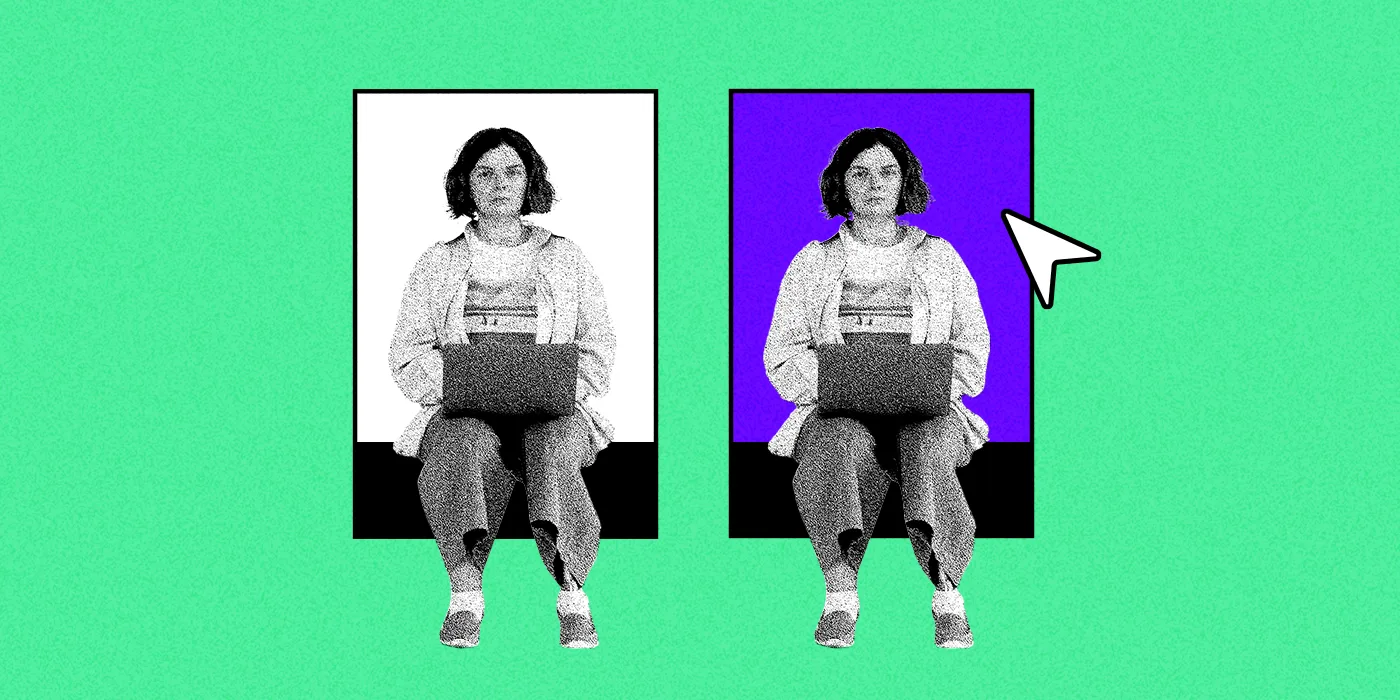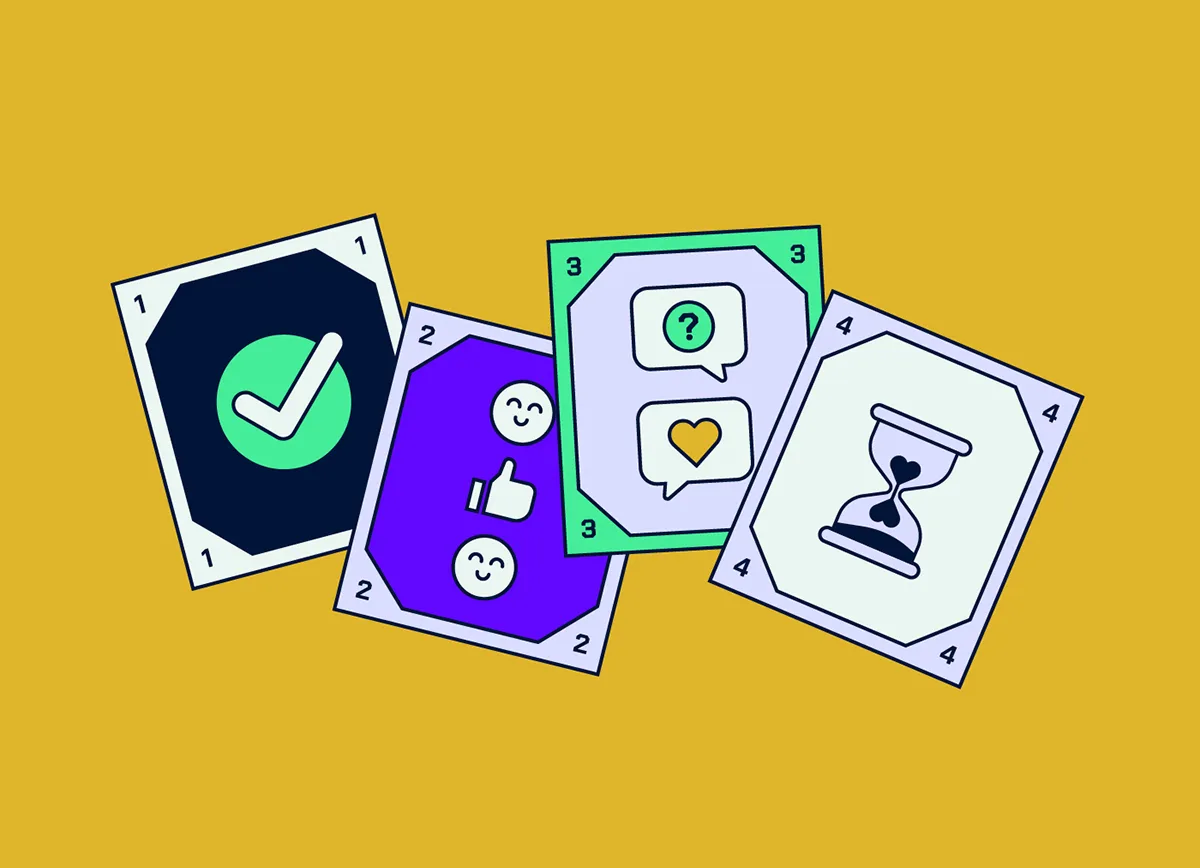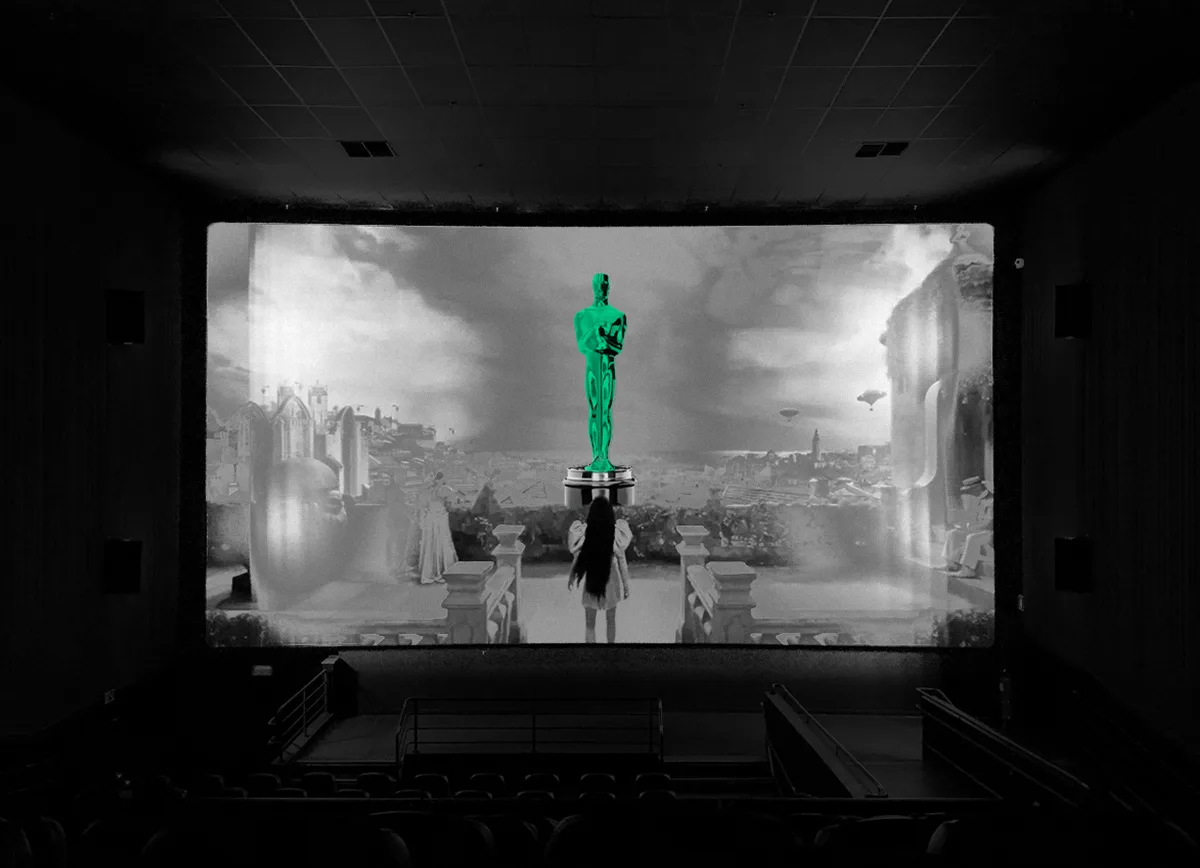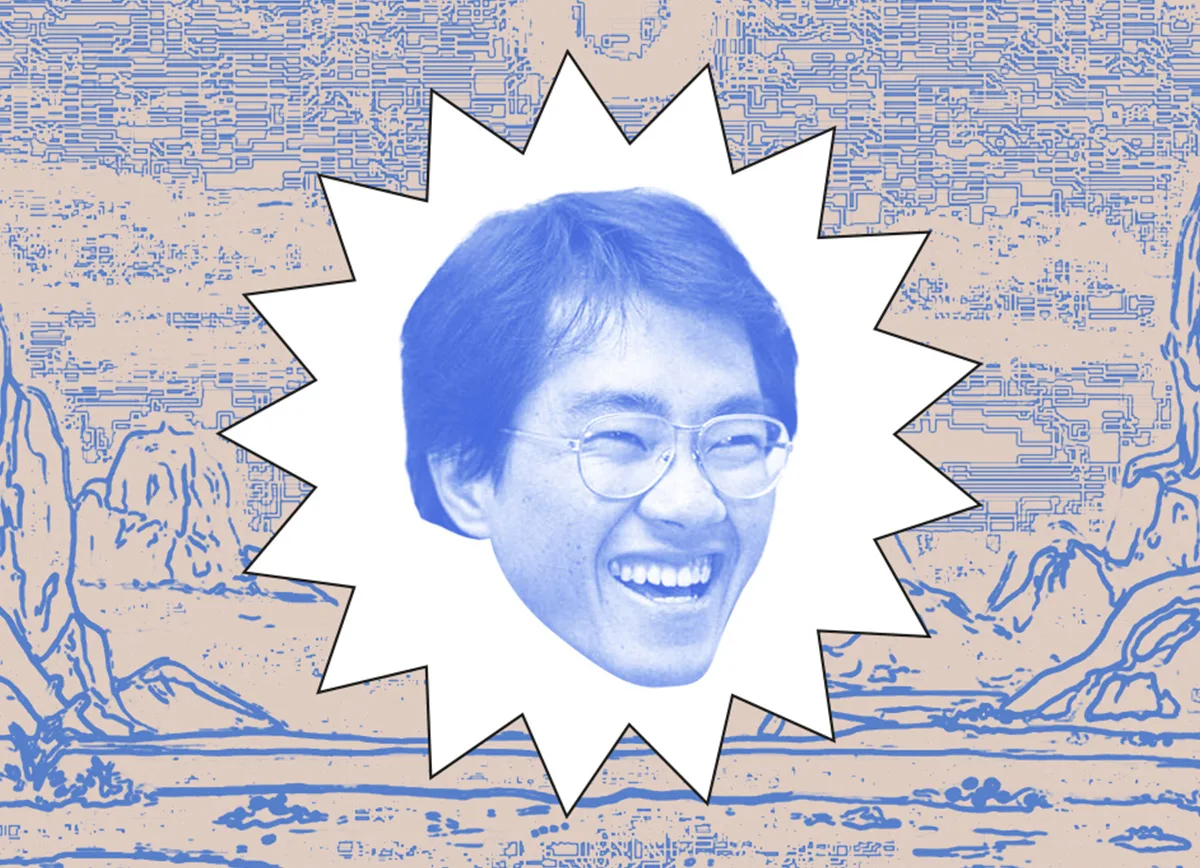Dear Amigos,
Job hunting can feel like wandering in a confusing maze, especially on LinkedIn where job titles flood your screen. Lately, I’ve noticed a lot of “visual,” “creative,” and “graphic” designer roles popping up. It got me thinking, what exactly am I? Is my work all about visuals? Yep. Is it creative? Absolutely. Is it graphic? You bet. But does that mean I fit perfectly into each box? Well, yes and no.
After reading tons of articles, only a few made sense to me. But when it comes to finding a job, how people see us matters. So, I figured it’s worth digging into the common definitions. But here’s the thing: while there are differences in perception, at the end of the day there are just descriptions, that will keep changing and evolving. In my view, a true designer isn’t just one thing but should know a bit about all kinds of visual communication, while being vertical in something: a “T-Shaped Designer”.
What is visual design?
Visual design blends graphic design and UI design to enhance the appearance and usability of digital products like websites and apps. It is a term related with “all things digital”. Even though it’s closely related to visual communication, which focuses on conveying messages visually, visual design hones in on aesthetics and usability. By combining UI and graphic design principles, visual designers strive to make products visually appealing and easy to use. This matters not only to manufacturers, as it influences purchasing decisions, but also to users, as it ensures products are user-friendly and efficient. All of these aspects related to visual design are achieved through thoughtful use of images, typography, layout, and color to optimize user experience and encourage engagement.
What is graphic design?
Graphic design, a longstanding craft, involves creating visual content to convey messages effectively. Originally rooted in print media, it has evolved to encompass digital mediums as well. Beginning with print publications like books and magazines, graphic designers now also delve into web design, adapting to the digital age. This expansion has blurred the boundaries between graphic and visual design, highlighting the versatility of graphic designers in both print and digital spheres. As digital communication becomes increasingly prevalent, graphic designers must continue to adapt to remain relevant in an ever-changing landscape.
What sets apart graphic design from visual design?
When it comes to how hiring managers and the industry perceive them, graphic design is often associated with print, advertising, and branding, while visual design is linked more to the digital realm. If you’re aspiring to excel as a UI/UX designer but aren’t quite ready to claim that title, identifying as a “visual designer” could be a strategic move. Interestingly, visual designers are often seen as commanding higher salaries than graphic designers, largely due to the abundance of opportunities in UI design compared to traditional communication work such as: advertising, printed media, etc. While both professions entail distinct types of work, the essence of being a true designer lies in being a critical thinker, problem solver, and creative soul. Despite the perceived division between graphic and visual design, I believe it’s essential for designers to have a comprehensive understanding of both realms. Whether you’re immersed in Figma or InDesign, prioritizing user-centric design and embracing typography is key. Specialization is valuable, but ultimately, beyond identifying as a visual or graphic designer, it’s about how you position yourself within the broader design landscape. Whether you gravitate towards editorial design, UI design, or branding, your chosen title should reflect your expertise and aspirations. “Graphic designer” or “visual designer” are both very general, baring in mind the previously mentioned differences due to the context they are both related to.
What are hiring managers are looking from you?
Looking through job ads can be tiring, especially when they mix things up and want you to be a pro at 3D stuff and know Python too.
If you are a visual designer
In general, as a visual designer, hiring managers or decision makers will be content to see a more digitally oriented portfolio, a strong understanding of user experience, app design, web design, and digital products—all things related to designing interfaces. You will probably be required to be proficient in Figma and the Adobe Creative Cloud, especially Photoshop and Illustrator. InDesign is more commonly expected of graphic designers. Possibly, you’ll work in a product design team. And well, at this point, if you have some basic HTML-CSS knowledge and a User Experience connoisseur, that would be great.
Looking ahead, you could position yourself as a Lead Product Designer, UX Designer, Motion Designer, UI Designer, among others. You could picture yourself working in a tech-related company.
If you are a graphic designer
Graphic designers usually work in the realms of advertising, branding, or marketing. Therefore, the skills expected from them are more oriented towards layout, typography, and everything related to effectively conveying a message. Graphic design is understood as how to “say it better” and “show it better.” As a graphic designer, people expect you to be proficient with the Adobe Creative Cloud and, of course, to be a pro in InDesign. You might work in a creative team, developing concepts and deliverables for advertising or marketing campaigns, crafting and effectively displaying a brand, or even designing the entire layout of a magazine. If you work for a marketing department, you will be expected to create on-brand marketing materials, whether digital or printed. If you work for a branding agency, you’ll create brands, develop brand identities, and ensure brand consistency across various platforms.
In the future, you could advance into roles such as Art Director, Creative Director, or Design Manager, position yourself as an editorial designer, brand designer, or to keep learning and become a type designer for example, and this is just the tip of the iceberg.
In a nutshell
In this graphic, you can observe some distinctions in how the world perceives these two job titles. As I mentioned earlier, I believe both professions are somewhat similar, but one leans more towards digital products, while the other focuses on visual communication.
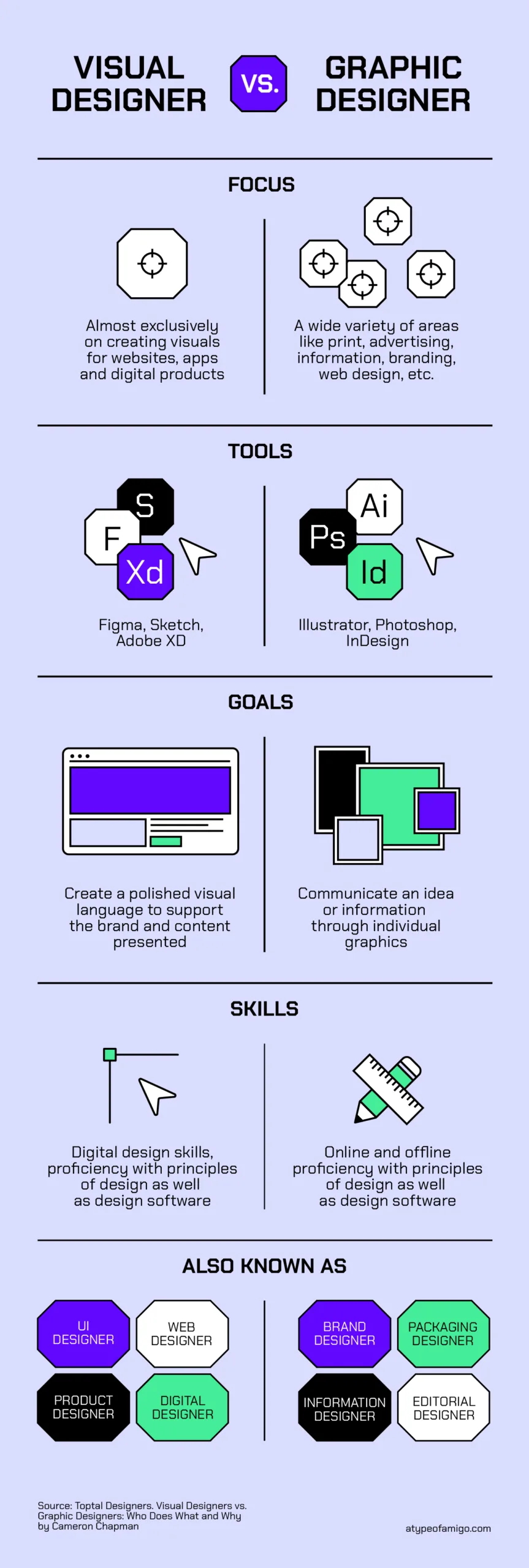
Dear Amigos, I’m sure you’re feeling more puzzled than ever, but don’t worry! Truthfully, the answer to this dilemma depends on who you aspire to become in the future. If you find yourself straddling both worlds at the moment, that’s perfectly acceptable. Simply reflect on where you envision yourself and chart the appropriate career path. These terms will keep changing with time, and we will keep hearing of new job titles.
Yours truly,
Camila Curiel
